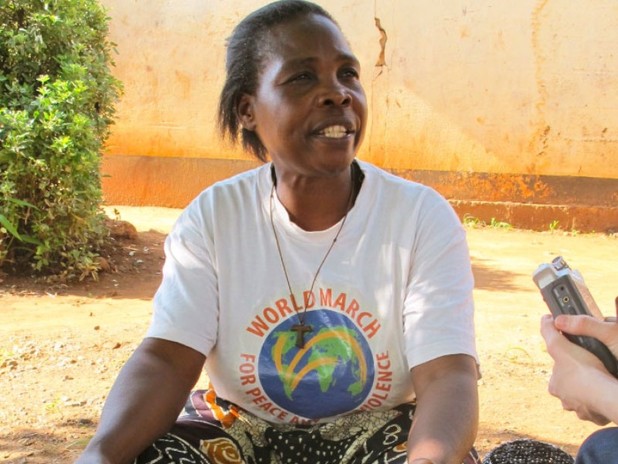January 31, 2012
IDEO.org/" target="_blank">IDEO.org kicks off a new project in Zambia conducting research in advance of a potential summit that aims to introduce human-centered design to the process of developing communications products and social change campaigns for public health stakeholders.
IDEO.org" target="_blank">IDEO.org" target="_blank">IDEO.org" target="_blank">IDEO.org" target="_blank">IDEO.org" target="_blank">IDEO.org/" target="_blank">IDEO.org kicked off a new project in Zambia as part of a project with Chemonics on the USAID-Funded Communications Support for Health Project (CSH). The team will be conducting design research in advance of a potential summit to bring together a community of social and behavior change communications practitioners and other relevant stakeholders. The goal of the potential summit is two-fold: to introduce human-centered design to the process of developing communications products and campaigns for social change and to create a supportive and sustainable community for these practitioners. A goal for the conference would be that participants cut across all major health sectors in Zambia including malaria, nutrition, maternal health, reproductive health, and HIV/AIDS.
The IDEO.org team is looking for ways to avoid "workshop fatigue" for potential conference attendees by engaging participants in a hands-on interactive way with a series of design challenges. The hope is to help practitioners and decision makers connect more directly to the end user, beneficiary and the Zambian population across demographics that they are trying to reach. The end result will hopefully be an inspired network of public health stakeholders who will be able to more effectively engage Zambians with public health messages that are more than informational posters and booklets.
Prior to departing for Zambia, the IDEO.org team spoke with Karen Greiner, an expert in communication for social change. Greiner explained that previous public health campaigns have often focused on the individual. -- Abstain. Be faithful. Use a condom. -- Use a mosquito net to avoid malaria. -- Recently, scholars like Greiner have begun thinking about social interactions within the community as a whole, hypothesizing that people make decisions based upon the environments they live in and the people that they know. The IDEO.org team also spoke with Amy Lockwood, Deputy Director of the Center for Innovation in Public Health at Stanford. Lockwood, with a background in marketing, advised the team to review basic marketing practices that look to uncover a person’s aspirations, values, attitudes and beliefs. She also encouraged the team to really look for the people on the ground in Zambia who know how to design and execute effective behavior change messaging, and then connect these individuals and their expertise more intimately to the project.
IDEO.org Fellows Emily Friedberg and Sarah Lidgus arrived in Zambia last week and are already off to a great start. They were briefed by the project team and their primary contact at the Ministry of Health, the Chief Health Promotion Officer. The team also spent time on the outskirts of Lusaka in a neighborhood called Linda Compound where they met with community health volunteers at Light of Hope. IDEO.org Fellow Jess Vechakul had worked previously with Light of Hope to design a bike ambulance and introduced the team to the group. It was an amazing day of interviews and time spent with the community. The team interviewed an HIV/AIDS counselor, two volunteer caregivers, and the director of Light of Hope, John Shawa. Everyone had a vivid and inspiring story to tell including what it is like to find out that you are HIV positive and how hard it is to continue your education when you become pregnant at a very young age.
A few key insights are already emerging:
- People trust information coming from people they know on a person-to-person level.
- There is too big a gap between the planners / decision makers and the people they are trying to reach in the public health community. This gap impairs the effectiveness of existing communications campaigns
- Health is an issue that needs to be addressed both on a community level as well as an individual level.
The team is hoping to explore these insights in the coming week and is already thinking about a design challenge for the potential summit that would encourage participants to go out into communities to gather information. The community versus individual problem insight is also prompting the question: “How might we create a holistic health campaign that encompasses all sectors and identified health practices as a collective problem?”
Check back soon for another update…









